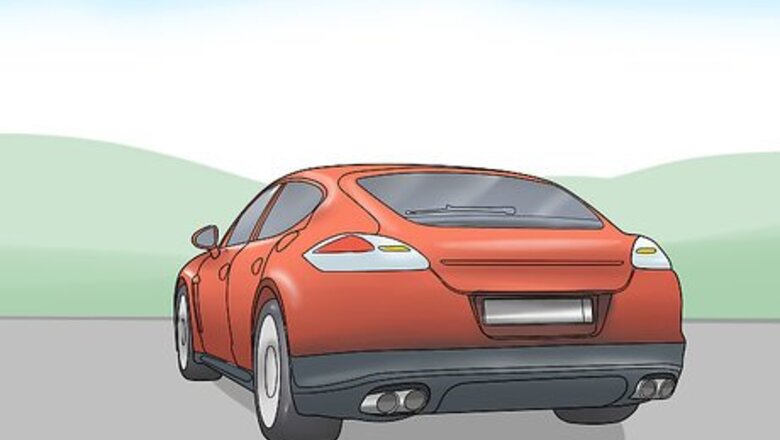
views
Locating the Exhaust Leak

Park the vehicle on a level, firm surface. In order to repair the exhaust leak, you will need to jack the vehicle up to locate it. When you jack up a portion of the car, the weight of that portion will be centralized into the relatively small space beneath the jack. It's important that you choose a surface that can support that weight. You also need the surface to be level, as it's extremely unsafe to jack up a car at an angle. Black top or concrete are acceptable surfaces to jack up a car. Never jack up a car on grass, dirt or gravel as it may cause the jack to topple over.
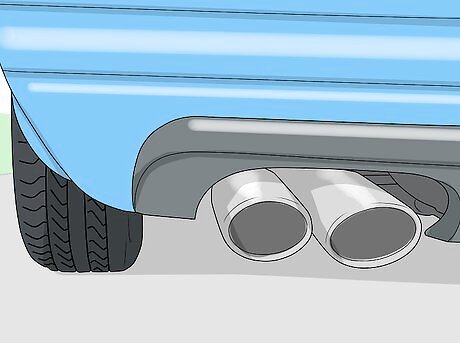
Allow the exhaust to cool. The exhaust piping in your vehicle can reach extremely high temperatures while the engine is running. Allow the vehicle to cool for a few hours before attempting to work on the exhaust to avoid burning yourself. It may take a number of hours to allow the exhaust to cool enough to touch. Touch the hood of your car. If it is still warm, the engine and exhaust are both still extremely hot.
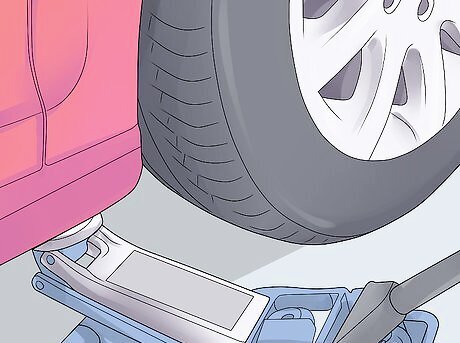
Jack up the vehicle. Slide a scissor or trolley jack below the vehicle at one of its designated jack points. If you are unsure where these jack points are, refer to the vehicle's owner's manual to help you locate them. With the jack in the correct space, jack up the car until it is high enough to safely work beneath it. Once the vehicle is jacked up, place jack stands beneath the vehicle to support its weight. Never work beneath a vehicle supported only by a jack.
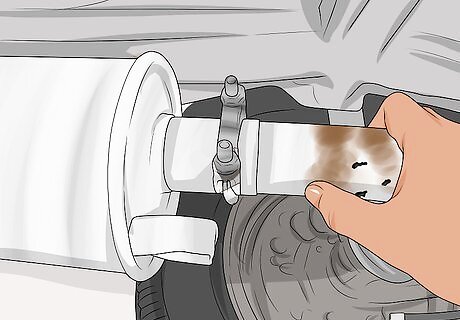
Inspect the exhaust piping. From beneath the vehicle, inspect the exhaust piping starting at the front of the vehicle and working your way back. If you have an idea of where the leak may be, you can begin your inspection in that area. Look for signs of damage such as scrapes, rust, cracks or holes. In lower vehicles, exhaust leaks can be caused by the underside of the vehicle bottoming out on things like speed bumps or pot holes. Rust is also a common cause of exhaust leaks. If rust penetrates through all the way through a pipe, it will result in a leak. Cracks in the piping are another common cause of exhaust leaks.

Start the vehicle to help locate leaks. If you are unable to readily identify the source of the leak with a visual inspection, have a friend start the vehicle. From beneath the car or truck you should be able to spot the leak as puffs of exhaust smoke escapes from it. Be extremely careful working under a vehicle that is running. Keep your hands away from any moving parts. Make sure the vehicle is in park (for automatic transmissions) or is in neutral with the wheels chocked (standard transmissions) before starting it.
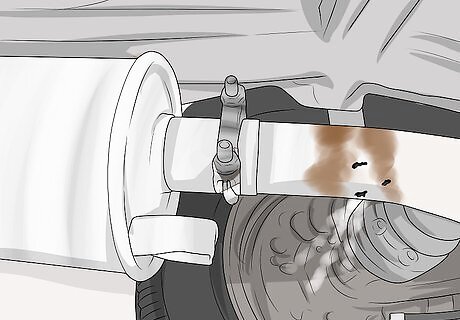
Assess the extent and type of damage. Depending on the type of damage you identify on your exhaust piping, your repair options may vary. If the exhaust piping is covered in extensive rust, that entire component of the exhaust may need to be replaced by a professional. Small scrapes or holes can be addressed without cutting out portions of the exhaust. Small holes may be repaired using exhaust tape or repair putty. Larger holes will need a piece of aluminum in conjunction with an epoxy to seal.
Sealing a Leak with Repair Epoxy or Exhaust Tape
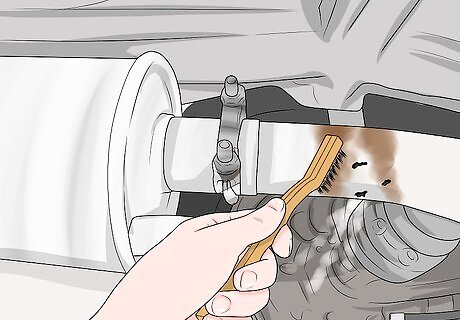
Scrub the area surrounding the leak with a steel toothed brush. Because the exhaust is located on the underside of the vehicle, it often gets caked with mud, dirt and rust. Once you locate the leak, use a steel toothed brush to scrub the area surrounding it. Most repairs will not stick or seal if done over dirt and grime. Scrub the entire portion of the pipe around the leak, including the top side if you can reach it. Make sure to wear eye protection while scrubbing the area to prevent debris from getting in your eyes.
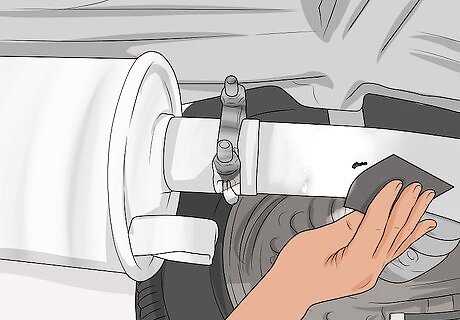
Use sandpaper to prepare the surface of the pipe. Once you have scraped off most of the dirt and grime, take a piece of fine grit sandpaper and use it to scrub the portion of the pipe you need to repair. Sandpaper will remove the last bits of dirt as well as creating tiny micro abrasions in the metal to help the tape or epoxy adhere to it. If you are using exhaust tape, make sure to scrub the pipe all the way around with the sand paper. Roughing up the surface of the metal will create a stronger bond for the patch.
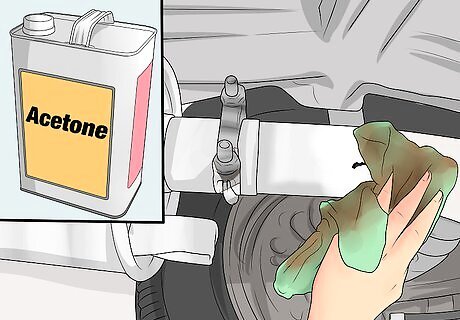
Wipe the surface down with acetone. Once you have brushed and sanded the pipe around the leak, wipe the area down with acetone to clean it and help the exhaust epoxy bond to the metal. Acetone is the primary ingredient in nail polish remover, so using nail polish remover will work well for this purpose. Be very careful not to drip acetone into your eyes or mouth while wiping down the pipe with it. You can purchase acetone in the cleaning chemicals section of many retail stores, or nail polish remover in the health and beauty sections.
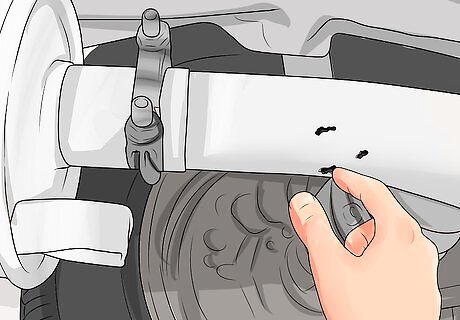
Determine if the hole is small enough to be sealed without a patch. Small cracks or pinholes can be sealed using just epoxy or exhaust tape, but larger holes will need a patch. If the leak is a thin crack or small hole, you can proceed without purchasing or making a patch to help. If the hole is larger, you will need a patch as well as epoxy. Attempting to seal too large a hole without a patch can result in an imperfect seal or the exhaust leak resurfacing after a few hours of driving.
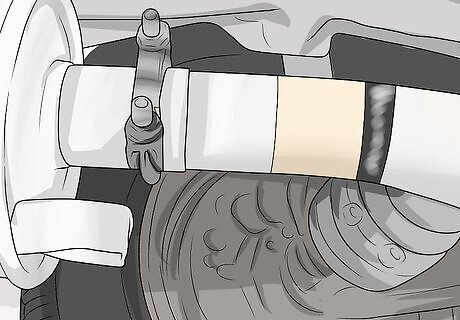
Wrap the exhaust tape around the pipe. If you are using exhaust repair tape, wrap it all the way around the pipe, covering the exhaust leak with at least two layers of tape. Make sure to wrap the tape around the pipe for a few inches to either side of the leak as well. Different kinds of exhaust repair tape will require different application methods, so be sure to read the instructions thoroughly before you begin. Some exhaust repair tape must be applied to warm pipes in order to establish a seal, so you may need to start the vehicle and let it run for a few minutes before applying. Other forms of exhaust repair tape needs to be wet before applying. You can purchase exhaust repair tape at most auto parts stores.

Mix the epoxy together and apply it to the leak. If you are using epoxy to seal the leak, mix the two parts together using a wooden dowel. Once the two parts are mixed, it will begin to cure immediately, so apply it to the leak quickly. Dab the epoxy over the leak, then use the wooden dowel to spread it around the area. Leave a thick layer of epoxy over and around the leak. You may also choose to wrap the leak in exhaust repair tape after applying the epoxy. Different types of epoxy have different curing rates, so read the instructions on the package to know how long to allow it to sit before driving the vehicle.
Using a Patch to Help Seal Leaks
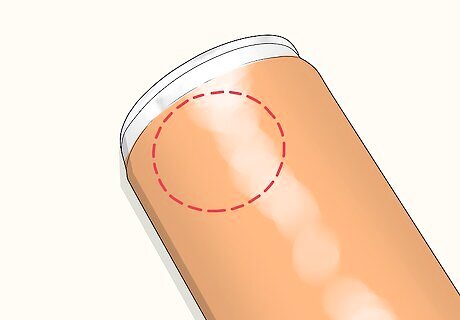
Determine the size of patch needed. You can purchase exhaust patch kits from your local auto parts store, but cutting up a piece of an aluminum can will actually do just as good as job at serving as a patch for a larger exhaust leak. After scrubbing and cleaning the area, determine how large the patch will need to be to cover the leak and leave at least a half inch or so of extra material beyond the hole itself. If the area that needs to be patched is larger than about three inches, that portion of the exhaust will likely need to be replaced. If you purchase a patch kit, make sure to read the directions to assess the size of a leak the kit can fix.
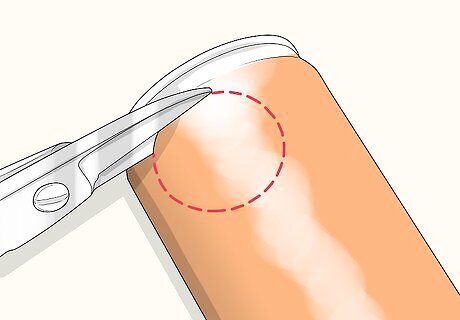
Cut an aluminum patch to fit over the leak. Use a pair of heavy duty scissors to cut your aluminum can into a patch large enough to cover the leak. You may also choose to wrap the can around the pipe. For smaller leaks, you can simply cut a circle of aluminum that is a half inch larger in diameter than the hole. You may want to wear gloves while cutting a can or aluminum patch to avoid being cut by sharp edges. Wrapping the can or patch all the way around the pipe will provide the best seal.
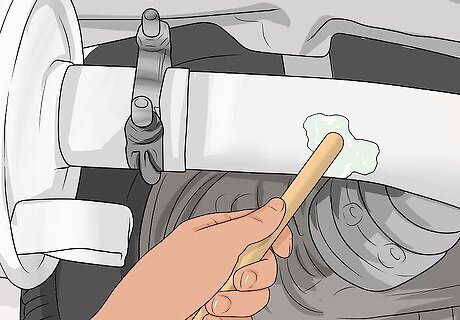
Cover the area surrounding the leak with epoxy. Just as you would seal a leak with epoxy, mix it together and apply it to the pipe around the leak. Make sure to apply enough epoxy to create a seal for the patch, but don't apply so much that the epoxy begins to drip into the exhaust piping. Apply the epoxy to an area surrounding the leak that is equal size to the patch you are applying. If you are going to wrap the patch all the way around the pipe, apply most of the epoxy to the area around the leak and a lighter coat all the way around the pipe.
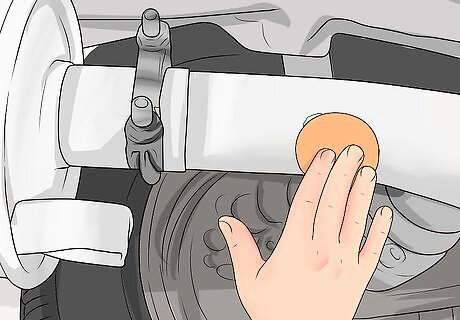
Place the patch over the leak. Either place the small patch directly over the hole or wrap a large patch all the way around the pipe. If wrapping the patch around the pipe, make sure the middle of the patch is over the leak itself. It's okay if some of the epoxy squeezes out the sides of the patch when you apply it. Make sure none of the leak extends beyond the sides of the patch.
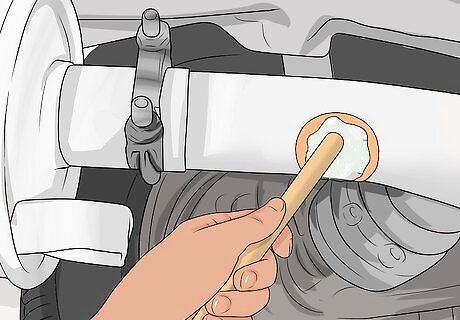
Apply epoxy over the patch. Use a wooden dowel to apply more epoxy to the edges of the patch. You may even choose to coat the patch itself with epoxy. This will help hold the patch in place as the epoxy dries while also creating a more solid seal to prevent any exhaust from leaking. Make sure to coat the perimeter of the patch with epoxy at the least to ensure there are no pinhole leaks. If you wrapped the entire pipe with a patch, you do not need to coat the entire patch, but pay special attention to wear the patch meets on the opposite side of the pipe from the leak.
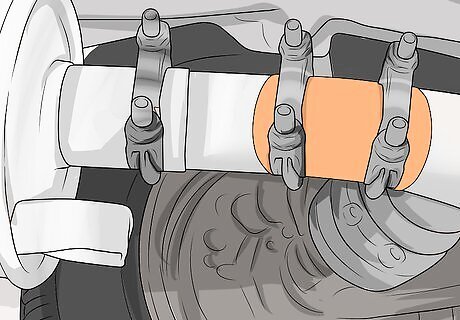
Secure a large patch in place with hose clamps. If you wrapped the patch all the way around the pipe, use two hose clamps to secure it in place and ensure a tight seal. Place one hose clamp on either side of the leak on the pipe, then use a socket wrench or flat head screw driver to tighten the clamps into place over the patch. The hose clamps will help ensure a tight seal along with the patch and epoxy. You may want to clip the excess ends off of the hose clamps once you are done.




















Comments
0 comment